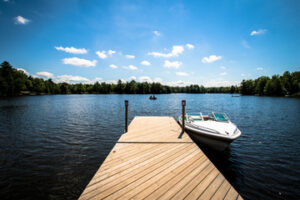The Basics of Dock Building
If you are building a dock, you need to consider the materials you use. You can use pressure-treated lumber, but be careful with the chemicals it will release into the water. Another option is aluminum, which is lightweight and durable but can corrode. Steel is another strong option, but it requires regular maintenance. If you want to be environmentally friendly, consider using recycled aluminum.
 Another important aspect of dock building is the water depth. If you’re building a dock on a lake, you should ensure that the water is shallow enough to get in and out of your boat without a problem. In addition, the depth of water can affect the stability of your dock. If the water level is unstable, consider a floating dock. This can also improve the safety of your dock. You should consult a professional at https://dockbuildingcharleston.com/ to ensure the dock will fit well in your lake.
Another important aspect of dock building is the water depth. If you’re building a dock on a lake, you should ensure that the water is shallow enough to get in and out of your boat without a problem. In addition, the depth of water can affect the stability of your dock. If the water level is unstable, consider a floating dock. This can also improve the safety of your dock. You should consult a professional at https://dockbuildingcharleston.com/ to ensure the dock will fit well in your lake.
If you’ve always wanted to work with your hands and enjoy working in a creative environment, consider a dock-building career. It can give you a larger market and help you earn more profit. You can work with a woman who enjoys surfing! Torry has been surfing on four continents, and drives out early in the morning with her surfboard in tow.
The first step in building a dock is determining the size. A good rule of thumb is to build your dock as close to the water as possible. If you are building a private dock, you’ll need a permit. You can obtain this permit by contacting your local building department. You should also make sure you have all the supplies and tools you need to complete the job properly. Remember to get as close as you can to the water, because a dock is very heavy.
If you’re building a dock, it can be expensive. It can cost thousands of dollars to build a dock. This cost can increase if it’s a complicated dock. It may even be more expensive if you choose to use a professional. In addition to the cost, consider the number of people using it. A well-planned dock will keep the area from getting crowded.
The bottom support layer is made of a rope. Then, you can anchor the barrels to it with the rope. To do this, you should tie one end of the rope to the next eye hook, then tie another knot to the last eye hook. Once you have secured the rope against the barrel, make a final knot to hold the rope.
You should also take into account the bottom depth of the lake. This can affect the depth of your dock. In cases of rocky bottoms, you should seek assistance from an expert. Additionally, the depth of the lake may vary considerably over time. Therefore, you should check the depth of the lake before building it. It is possible to adjust the length of the rope to the depth you desire. It’s also helpful to recruit a few people who can help you with the lifting process.
Sometimes, you may need to use crib docks instead of regular ones. These docks are built with a wooden structure. This structure is used to support the dock. It should be long and wide, and tall enough to accommodate the dock. These wooden structures are not very durable, so you will need to check them regularly. These types of docks require regular maintenance and repairs.
The materials you choose for your DIY docks are important for their longevity and look. Choosing better quality materials will make sure they last for years. Most DIY docks are made of pressure-treated wood, but you should also consider aluminum or composite materials. Composites are great for decking, and you can even use modified wood, which is treated with moisture-resistant wood and does not contain any toxic chemicals. It’s also comfortable walking on and can withstand extreme weather conditions.
A floating dock is another option. These docks are anchored to the lake bottom or shoreline with legs or stanchions. Floating docks are more stable and can be removed from the water when you don’t need them.
